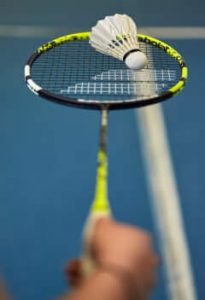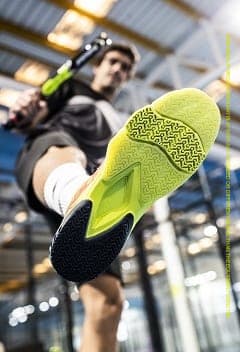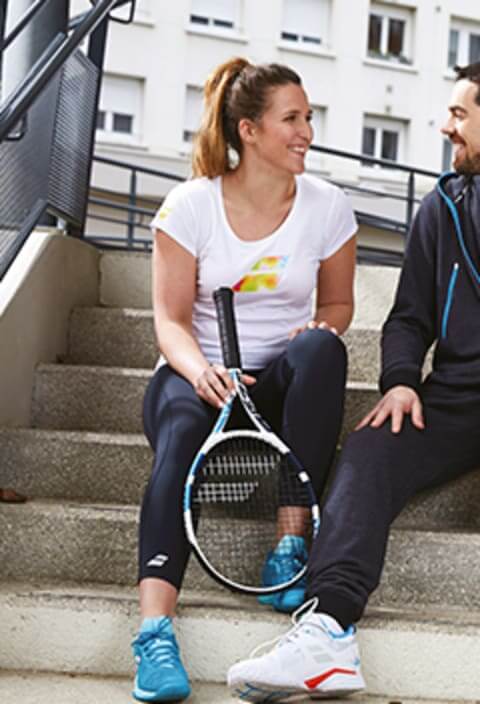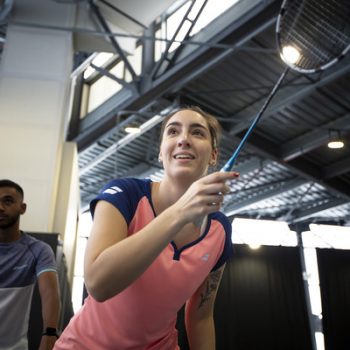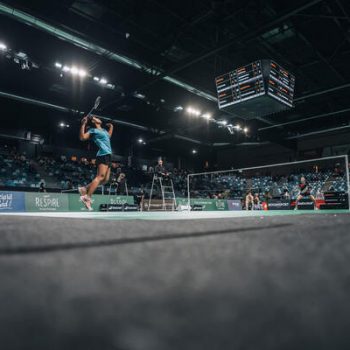Phát triển thế chất và vận động toàn bộ cơ thể của bạn với môn cầu lông.
Badminton is one of the world’s most physical sports and players need a physique to match. Julien Fuchs, head of the Pôle Espoir Badminton in Strasbourg and an ASPTTS foundation captain, explains the main benefits of playing badminton for your:
• Cardiovascular system
• Musculoskeletal apparatus
• Neurosensory abilities
Badminton is a rounded sport that allows you to work on your strength, coordination, joint mobility, physical alertness, and flexibility. Whether you play for fun or professionally, badminton is beneficial for your body and general health.
1. The physical benefits of badminton for the cardio-vascular system:

Aerobics is essential if you want to develop qualities such as your:
● Endurance “to help your body recover quickly and properly after a training session or match”
● And drill “to enable your body to make repeated effort throughout a game or session.”
You can also increase your endurance by doing longer-lasting physical exercises. On-court movement drills such as shadow play, interval circuits, agility ladders, steps, and multi-shuttle feeding, make it easier to push your body to its maximum power level.
2. The benefits of badminton for the musculoskeletal apparatus:

Badminton works almost every muscle in the body. The lower limbs, especially the thighs and buttocks, as well as the trunk and abdominal muscles take a lot of strain. “I’d even say badminton works the whole body, right down to the fingers,” adds Julien. “We need to grip and release the racket, so we can change the direction of the head at the last moment.”
The best way to develop your muscles, speed, and flexibility is to organise training sessions in a way that works every part of your body.
● Work your muscles “through weight-training and strength-building, essential for high-level players. You can do all the exercises in a weights room, including trunk work and muscle-toning.”
● Work your trunk “with static and dynamic muscle-toning by doing plank exercises combined with hand and foot movements, and/or side muscle-toning, for oblique muscles.”
● Work your hands by “practicing an exercise called grip and release where you grip and then release the racket as you hit the shuttle, or a tennis ball – but you can also do pull-ups, deadlifts, or use dumbbells, elastic-bands and sticks.”
● Work your flexibility by doing “exercises such as flexions, rotations and/or extensions, but also yoga exercises, and alternative medicine – although this practice is very recent in badminton”.
For optimal results, do all of these exercises on a daily basis to keep yourself in top shape. And don’t forget to stretch! Although we tend to skimp on stretching at the end of the session, it’s an important part of the recovery process.
3. The benefits of badminton for your neurosensory abilities:
Badminton helps develop your sensory perception abilities, such as thinking, strategy, concentration, and coordination.
It has multiple guaranteed benefits and helps strengthen your:
● Vision: “Hitting shuttles to the left of the court, then to the right, or coming at you at 400 kmph, develops your visual abilities and reflexes.”
● Stress management: “Prepare for the unexpected by playing with poor-quality shuttles, in the dark, or in smaller playing areas. If you experience a hitch, technical problem, or your equipment fails, you’ll know how respond and keep a cool head.”
● Self-confidence: “Win competitions, think about your strong points and development, and always use positive language and take a positive attitude.”
● Concentration: “Do individual exercises like focusing on your strengths, using positive language, recalling a positive image/moment, doing mental arithmetic, etc.”
Playing badminton offers multiple benefits for our bodies, both physical and mental. Contrary to appearances, badminton is one of the most physical and demanding racket sports at every level – cardio, muscular, and psychological. The skills we develop while playing badminton can also be used in our everyday lives.

Bài viết này hữu ích với bạn?

